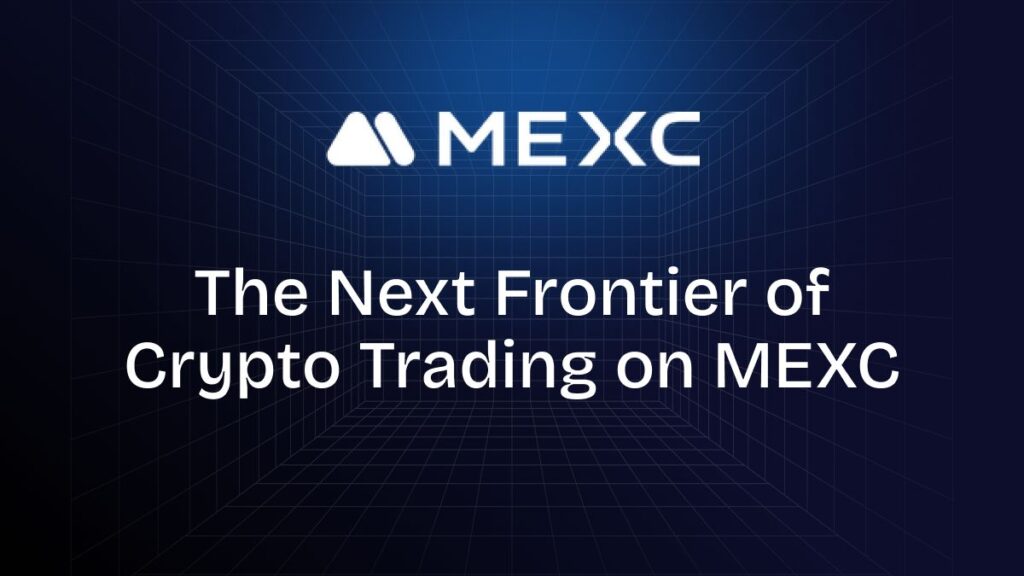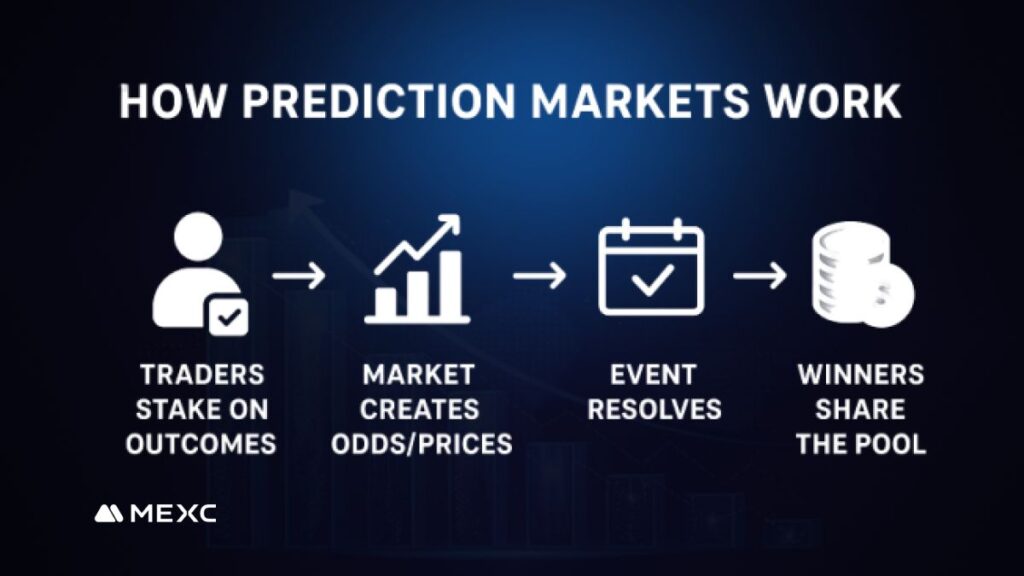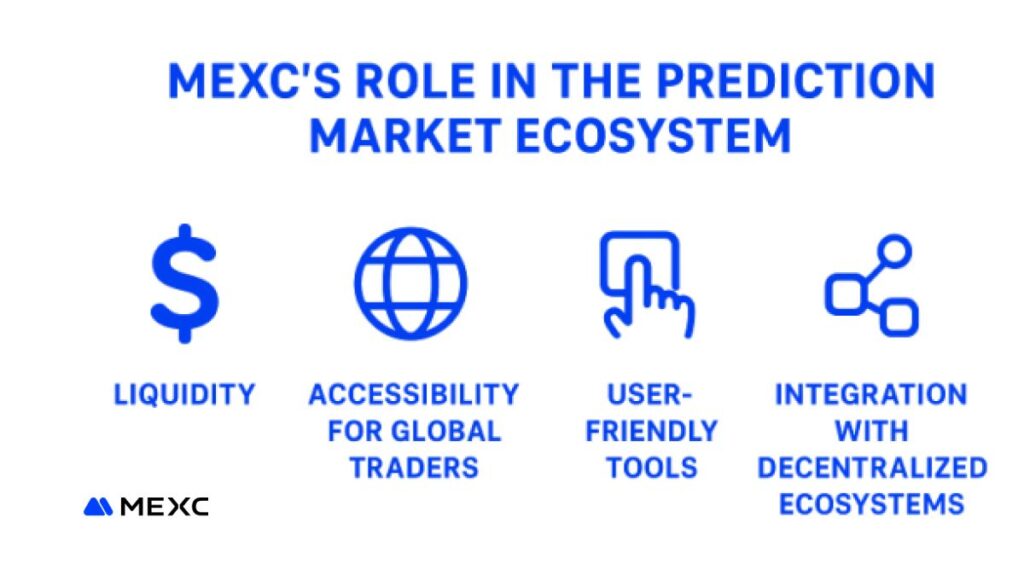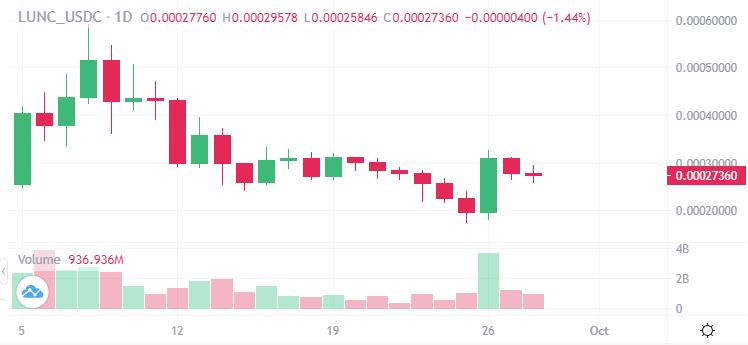
Crypto is much more than tokens, charts and speculation. It has the potential to become a living test of what it means to be human, to exchange value with one another, and to coordinate at an unprecedented scale. Of all the fascinating innovations sliding down the blockchain pathways, decentralized prediction markets are particularly interesting. These markets take our collective knowledge and create a shareable, tradable, and powerful alternative to traditional prediction machinery. These markets can allow you to “bet” on anything from sports, elections, market movements, and even the weather.
While the idea is a strong one, prediction markets face the same liquidity, accessibility and trust issues that every other crypto vertical struggles with. This is where exchanges such as MEXC come in; not to compete with decentralization, but to empower the trader on decentralization, and to link those markets with a global base of users.
Now, let’s unpack why prediction markets are important, how they are maturing, and the role MEXC has in unlocking those possibilities.
1.What Are Prediction Markets, and Why Are They Important?
Prediction markets are simply exchanges where participants buy and sell shares related to the outcomes of future events. They are like a decentralized “yes/no” stock exchange targeted to real-world questions.
- Will Bitcoin close above $100k by 2026?
- Will Team A be world cup winners?
- Will inflation subside below 3% by next quarter?
Each of these questions is tokenized and the market price reflects a general consensus of belief in the probability of the event taking place. If the market prices “Yes” at $0.70, it’s indicative of a 70% likelihood of the event happening.
Why is that good? Because history has shown us that, collective crowd intelligence is often a more accurate predictor than individual experts. From Iowa’s political prediction markets, to today’s decentralized versions like Polymarket… all of these systems have been able to accurately foresee future events in the contingent market.

2.The Decentralized Prediction Market Moment
The introduction of blockchain provides prediction markets with an edge heretofore unavailable to prediction markets. Instead of relying on a centralized bookkeeper, prediction markets can now be governed by smart contracts protected by decentralized oracles providing the end result.
Several players in this area are notable:
- Polymarket – the leader in real-money prediction markets with vibrant, active communities around politics, sports, and finance.
- Augur – one of the pioneers of decentralized platforms, designed to allow anyone to create, and trade on markets without using intermediaries.
- Gnosis – aiming to build the infrastructure for decentralized finance (DeFi) by adding forecasting markets.
Despite being an innovative industry, the current and emerging prediction markets face obstacles: cumbersome onboarding, fragmented liquidity and uncertain regulation. This is where centralized exchanges might help fill the gap.
3.Why it Matters to Traders
For traders, the utility of prediction markets is not merely entertainment – a way to speculate on outcomes – prediction markets also represent another hedging and speculation tool to use.
- Diversification
Instead of being limited to trading BTC or ETH, prediction markets provide exposure to outcomes based on politics, sports, macro-economic events, which allows for diversification strategies into assets beyond crypto.
- Hedging Real Exposure
Suppose you are a BTC holder and you have existential fear of macro events (e.g. US interest rate decisions). Prediction markets related to those events would allow you to hedge that exposure without selling your underlying assets.
- Market Sentiment
Prices in prediction markets can act as sentiment indicators for participants in real time. As well, if things are looking good for a “yes” outcome for inflation going below 3%, we might know how the collective participants view the macro conditions.
This is where MEXC comes into play: it offers the underlying framework for traders to take advantage of these signals with ample liquidity and quick execution
4.MEXC’s Role in Supporting Prediction Markets

So, how do decentralized prediction markets fit in, and how do exchanges like MEXC support them? It’s less about facilitating these markets and more about creating access, liquidity, and a connection between on-chain prediction ecosystems and global traders.
4.1 Token Listings and Liquidity
Many decentralized prediction markets launch governance tokens (ex. REP for Augur, GNO for Gnosis). MEXC recognizes the importance of listing the tokens early, and providing deep liquidity for traders to directly participate in the evolution of these ecosystems.
4.2 Bringing On-Chain and Off-Chain Participation Together
It’s difficult for a casual user to navigate and learn to use these decentralized markets. MEXC’s trading interface is normal now and allows retail traders exposure to these tokens without having to juggle working with multiple wallets, bridges, and oracles.
4.3 Derivatives and Futures
In addition to spot trading, MEXC also allows for derivatives linked to prediction market tokens. This offers traders further sophisticated products to: hedge, increase leverage or speculate at a lower cost of capital.
4.4 Data Insights and Market Signals
Prediction market activity can be aggregated into MEXC’s data watch section. Observing flows, volumes, and sentiment across prediction tokens provides an extra layer of context for traders. It is just another signal – similar to funding rates or stablecoin flows.
4.5 Community Empowerment
Prediction markets are only as strong as the community. MEXC has a global user base that promotes discussion, education, and collaboration within prediction ecosystems. The initiatives we will host or fund like AMAs, research reports, and community campaigns will spotlight these projects.
5.Case Study: Polymarket’s Growth Curve
Let’s use Polymarket as an example and the growth curve for prediction market trading volume is explosive in 2024. It is very clear that Polymarket usage spiked during major world events, most notably during the recent elections and the surge in sports tournaments. The increased usage was noteworthy and made headlines in mainstream media.
While Polymarket itself fully embraces decentralization, its rise has created interest in various assets associated with predictions. On MEXC, related governance tokens and ecosystem plays saw spikes in liquidity as traders found opportunities to improve their exposure.
This is the loop in action: decentralized adoption → token demand → centralized exchange listings → broader participation from traders → growth of the entire ecosystem.
6.The Narrative Value of Prediction Markets
Crypto as a space thrives on narratives, and prediction markets uniquely provide a connection to real-world events.
While most DeFi projects are about tokenomics and yield farming, prediction markets bring people into outcomes they already care about – elections, sports, weather and finance. They are sticky, incumbent, and viral.
For traders, these narratives translate into opportunities. For exchanges, these narratives allow the exchange an opportunity to expand the funnel of who becomes involved in crypto. For MEXC, supporting these narratives allows for it to be positioned at the edge of macro-driven user adoption.
7.The Broader Theme: Markets as Information Systems
As it is worth noting that prediction markets shouldn’t just be thought of as financial amusement parks, but also, information systems. Every trade made in these markets represents that participant’s belief, and together make up surprisingly accurate forecasts.
By giving access and liquidity for prediction-focused tokens, MEXC serves to amplify these prediction engines. Traders gain informational and financial value when people use these markets as sentiment or macro-shift signals.
8.Prediction Markets Challenges and MEXC Solutions
It’s clear there are challenges when it comes to prediction markets:
- Regulatory Uncertainty – some regions could categorize them as gambling.
- Fragmented liquidity – markets cannot function with little to no participants.
- Oracle risks – it is essential to accurately report an outcome.
MEXC mitigates inference when it:
- Provides regulated access to prediction tokens within its jurisdictions.
- Centralizes liquidity into one accessible environment where traders ultimately feel safe.
- Creates educational content to help users explore both opportunities and risks.
Having this balance appropriately allows traders to use prediction systems without being too confused by the complexities of on-chain predictions and compliance.
9.Conclusion: MEXC is a portal into the next evolution of forecasting
Decentralized prediction markets are not just a crypto version of an athlete’s all-star selection – but they are a new way to price information, hedge risks, and establish financial flows between global events. Moreover, they offer traders another active engagement area full of volatility, chance, and insight.
MEXC is very important here, to be a bridge – giving token exposures, liquidity, derivatives, and education that makes these ecosystems available to everyone around the world.
As the crypto ecosystem develops, prediction markets will become significantly more relevant than simply speculation, they will become a primary building block for information-based markets. With MEXC playing an increasingly central role in this evolution of trader behavior, traders will have even greater opportunities to take advantage of prediction markets.
Disclaimer: This content is for educational and reference purposes only and does not constitute any investment advice. Digital asset investments carry high risk. Please evaluate carefully and assume full responsibility for your own decisions.
Join MEXC and Get up to $10,000 Bonus!
Sign Up


